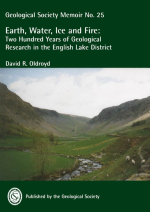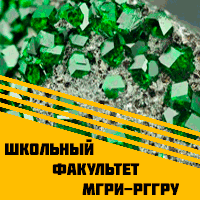Добрый день, Коллеги. Важное сообщение, просьба принять участие. Музей Ферсмана ищет помощь для реставрационных работ в помещении. Подробности по ссылке
Earth, water, ice and fire: Two hundred years of geological research in the English lake district / Земля, вода, лед и пламя: двести лет геологических исследований в английском озерном крае
First we must put some boundaries around our topic, to contain it as far as possible in space and time. For space, I consider largely the areas shown in Figures 1.1 and 1.2. Looking at the geological map, we see a central region, running from Cockermouth in the NW to Kendal in the SE, which is divided into three main geological regions. This forms the main area of mountains, the central part of the threefold division being the most mountainous. (The southern section is hilly rather than mountainous.) To the west, there are large masses of pink crystalline rock, near Ennerdale and Wastwater, and somewhat similar rock is found on the eastern side at Shap. Dark crystalline rock is found at the northeastern edge of the mountains at Caldbeck Fell, and also round the northern edge of the hills. There is a 'frame' of sandstones, coals and limestones right round the mountain region.
In the present study, I shall be largely concerned with the ancient rocks of the mountainous region of the Lakes, and will not have too much to say about those of the surrounding 'frame'. We must, however, give attention to the rocks near Cross Fell, to the east of Penrith, or to the west of the Pennines, for some of them are similar in kind to those of the main body of the Lake District, and their study has always been intertwined with those of the Lakes proper. In fact, the very first 'scientific' account of Lakeland rocks was written by a local parson who lived in the Cross Fell area. Reference will also be made to 'Lakeland-type' rocks to the south, in the Howgill Fells, and yet further south, rocks in the 'Lakeland-type' 'Craven Inliers' in NW Yorkshire.
As to time, my account deals principally with the two hundred years from 1800 to 2000 (and I am typing the words of the present sentence on Christmas Day, 2000). However, humans have been interested in Lakeland rocks from time immemorial. There is, for example, an impressive prehistoric stone circle in St John's Vale, near Keswick, which shows that the people of that period were at least capable of selecting and cutting stone for their own mysterious purposes, whatever they may have been. There is also a gully near Harrison Pike, Langdale, high in the Central Fells, where a hard 'hornstone' is exposed. It takes an edge like a knife and is known to have been used extensively, perhaps some 5000 years ago, and 'exported' to many parts of Britain (though there has been controversy amongst experts as to whether the stone was carried as boulders by ice and then worked, or carried by human hands after working). There are also many indications of the Roman occupation of the Lake District, and a system of roads was constructed, one 'crazy' one going right along the top of a mountain range - High Street - providing what must have been a miserable, albeit direct, route for travelling between Penrith and Ambleside. More relevant to our purposes, it is believed that the Romans conducted mining operations in the Lake District. And there was mining activity of some importance, hiefly for copper and lead, in various parts of the region over the centuries, long before geology became an established science at the beginning of the nineteenth century. For example, there was quite a large German mining community in Keswick in Elizabethan times. Copper was worked near Coniston, and various metals were obtained from the rocks near Caldbeck. Coal too has been worked for many years around the margins of the Lakes, especially near Maryport, Workington, Whitehaven and Barrow, along the coast of the Irish Sea. There are also large slate quarries and mines, some still in operation. However, there is already a large literature on the history of Lakeland mining (e.g. Postlethwaite 1913; Adams 1995), and I do not propose to add to it in the present study. <...>




